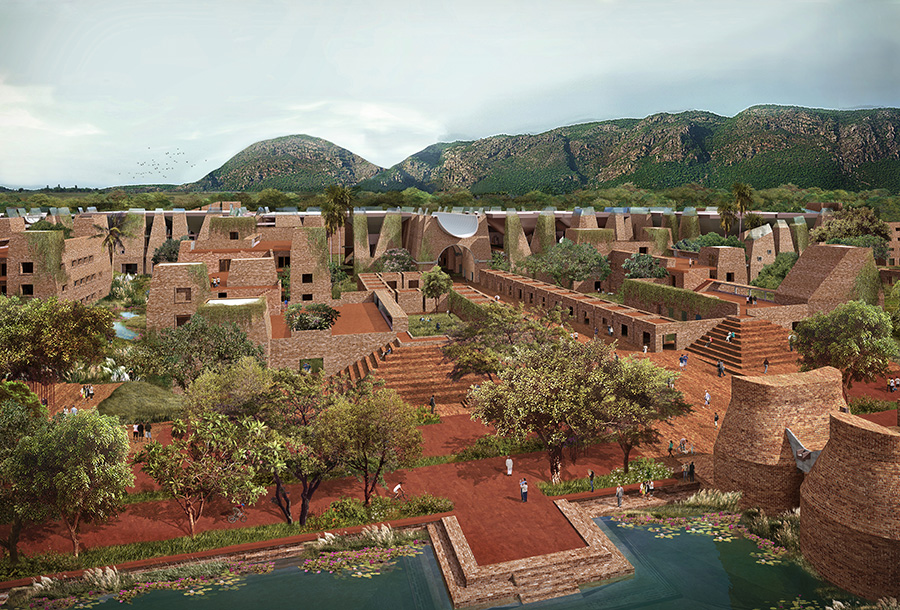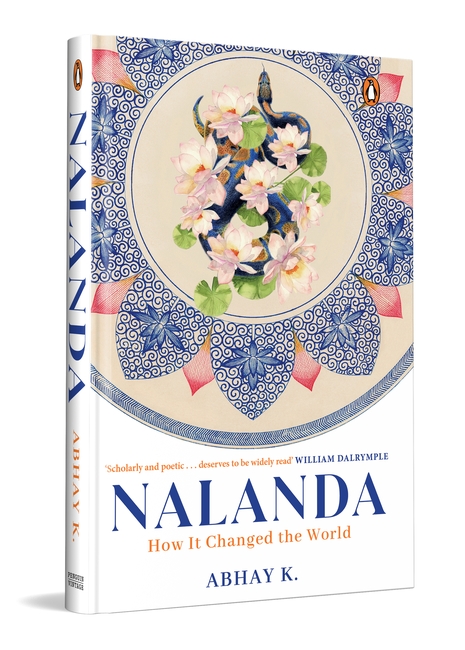
Shankar Kumar
Nalanda continues to have a mesmerising impact on people across the world because it represents far more than an ancient seat of learning—a symbol of India’s civilizational past, its intellectual depth, and cultural richness. And this is what Abhay Kumar, a career diplomat who is currently serving as Deputy Director General of the Indian Council for Cultural Relations (ICRC), has unravelled in his book ‘Nalanda: How it changed the world.’
Describing Nalanda as an international melting pot from the 5th century CE to 1200 CE, Abhay Kumar says that many foreign scholars from China, Korea, Tibet, Nepal, East Asia, Central and West Asia thronged its library to study and copy various Buddhist sutras.
Nalanda’s library, which was known as the Dharmgranj or Mountain of Truth, housed millions of manuscripts. The library contained three divisions: Ratnadadhi (Sea of Jewels), Ratnasagara (Ocean of Jewels) and Ratnaranjaka (Jewel-Adorned). Ratnasagara was a nine-floor edifice.
The BBC, in an article published in February 2023, said that Nalanda University housed nine million books and attracted 10,000 students from around the world.
 Nalanda University
Nalanda University
While such accounts highlight the extraordinary intellectual wealth of this seat of learning in ancient India, these also capture the vibrant scholarly aura that pervades across the vast campus of what is regarded as the world’s first residential university.
Apart from texts of the Mahayana and 18 sects of Buddhism, Vedas, Brahmanas, the Hetuvidya, the Sabdvidya, the Chikitsavidya, the works of magic, the Sankhya, philosophy, astronomy, law, philology, and the Sanskrit grammar were taught at Nalanda.
Aryabhata, regarded as the father of Indian mathematics, was the most prominent mathematician at the Nalanda Mahavihara in the sixth century CE, states Abhay Kumar in his book, while talking about the galaxy of great scholars that the university nurtured during its heyday.
Nagarjuna, Vasubandhu, Shantarakshita and Kamalashila were among a vast number of distinguished scholars whose presence at Nalanda greatly enhanced its intellectual vibrancy and reinforced its reputation as the great seat of learning.

The medium of instruction at Nalanda was Sanskrit, and the foreign scholars who visited the famous monastic university to study medicine, mathematics, logic, philosophy, and Buddhist principles were expected to acquire proficiency in Sanskrit before arriving at the monastic university, the book ‘Nalanda’ underlines.
Undoubtedly, every finer aspect of Nalanda and its past has been captured by the author in his book. Moreover, to make it interesting for readers, historical facts have been successfully woven into a narrative style as seen in the account of the most well-known Chinese scholar Xuanzang’s visit to Nalanda in 630-643 CE.
Xuanzang was very determined to travel to Nalanda from China, which was then ruled by Emperor Taizong of the Tang dynasty. Emperor Taizong was firmly against his citizens’ visits outside China. Despite such restrictions, Xuanzang took risks to travel to Nalanda. He set out on his journey, but was captured by border guards. Upon learning the noble purpose of his visit, they released him, enabling him to continue his travel to Nalanda.
Interestingly, after his return to China, Xuanzang, who carried with him 657 books, was given a red-carpet welcome by the Tang dynasty emperor, noted poet-diplomat Abhay Kumar, while highlighting details from his book at an event hosted by the New Delhi-based think tank Vivekananda International Foundation.
Overall, he highlighted six core principles that made Nalanda exceptional: A world-class knowledge infrastructure; a cosmopolitan student body drawn from China, Tibet, Korea, Sri Lanka, Nepal and Persia; a merit-based access regardless of wealth and caste; robust patronage from emperors and local communities; a vision for education aimed at human flourishing and not just for employability.
Yet, the book is not without certain editorial oversights. Published by Penguin Random House, the 193-page book required responsible handling by its editorial team to do away with errors. In this regard, Prof KTS Sarao, a historian, was rather straightforward in telling both the author and the publisher to come out with the second edition of the book to correct factual mistakes, most of which could have been avoided through more concerted effort on the part of the publisher. Despite this, he praised the book, calling it a “beautiful piece of work.”
Dr Seshadri Chari, who also participated as a panellist at the event at the Vivekananda International Foundation, suggested that the author should consider adapting the book into a short documentary film, as it would give audiences an engaging recollection of India and its ancient past. Similarly, Prof Shailendra Raj Mehta of O P Jindal Global University praised the book for bridging the historical past with present-day challenges.
ALSO READ: Artist-Poet G. R. Santosh was inspired by Kashmir's Shaivism, Tantra
In a nutshell, Abhay Kumar’s book ‘Nalanda: How it changed the world’ rekindles the grandeur of an institution that once stood at the height of global learning and cultural exchange. By weaving historical facts with narrative depth, the book, in fact, reminds readers that Nalanda was not merely a university of its time but a living embodiment of India’s civilizational vision.
